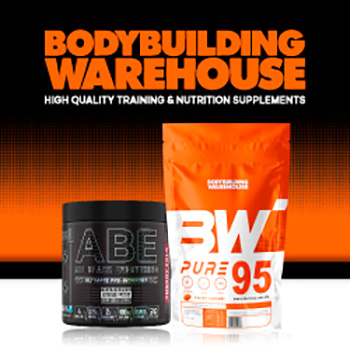Unlock The Secret To Injury Prevention Practices Every Athlete Should Know

Summary
- Dynamic warm up routines can cut injury risk by half, getting muscles and joints ready for athletic performance.
- Sport specific strength training programs are key to building joint stability and addressing common weak points that lead to injuries in different sports.
- Athletes who get enough sleep (7-9 hours per night) have significantly fewer injuries than those who regularly sleep less than 6 hours.
- Knowing the difference between normal muscle soreness and injury pain is important sharp, sudden, or localized pain often means there’s a problem that needs attention.
- Consistent recovery methods including good nutrition, hydration, and active recovery techniques are as important for preventing injuries as the training itself.
Sports injuries can take even the most dedicated athletes out of the game, turning promising seasons into frustrating periods of rehab. The good news? Most sports injuries can be prevented with the right approach to training, recovery, and body awareness. Whether you’re a weekend warrior or a professional competitor, these evidence based strategies can help you stay in the game and perform at your best.
Why Athletes Get Injured: The Real Causes
Injuries rarely happen by chance. Most athletic injuries stem from identifiable and modifiable risk factors that, once understood, can be addressed systematically. The primary culprits include training errors, biomechanical imbalances, inadequate recovery, and poor preparation.
Despite what many people think, pushing through pain doesn’t usually result in improved performance. Instead, it often leads straight to the physiotherapist’s office. A lot of athletes operate under the mistaken belief that “no pain, no gain”, ignoring the important warning signs their bodies give them before serious injuries happen. This attitude creates a vicious circle of incomplete recovery and accumulated tissue damage that eventually results in time lost from training and competition.
- Increasing training volume or intensity too quickly
- Muscle imbalances and poor movement patterns that put too much stress on joints
- Not enough recovery time between training sessions, leading to a build up of fatigue
- Previous injuries that weren’t fully healed before returning to play
- Poor technique, especially when tired
The Effect of Bad Training Techniques
About 60-80% of overuse injuries in athletes are caused by training errors. The most common mistake is increasing training volume too quickly. This can be mileage, weight, or duration. The body needs time to adapt. Your tissues need time to strengthen in response to the stress of training. If you rush this process, you’re creating damage faster than your body can repair it.
Technique is key to preventing injuries. In running, a bad foot strike pattern can lead to stress fractures. For weightlifters, bad form during complex movements like squats or deadlifts can cause serious back injuries. For throwing athletes, incorrect mechanics put too much stress on the shoulder and elbow. Working with qualified coaches to get the technique right is a good way to prevent injuries.
Warning Signs You’re Likely to Ignore
Our bodies are quite good at telling us when something’s not right. Unfortunately, we’re not always good at listening. If you’re consistently tired and not feeling refreshed after a good night’s sleep, you may be overtraining, which is often a precursor to injuries. Similarly, if you notice that you’re not moving symmetrically maybe you’re favouring one side when you’re doing exercises that involve both sides of your body that’s often a sign that you’re compensating for something and could be at risk for injury.
Overtraining often manifests as sleep disturbances, particularly when coupled with a drop in performance. This could indicate that your body is struggling to recover from the stress of training. One way to objectively measure your recovery status is by monitoring your resting heart rate. If you notice that your morning heart rate is elevated (more than 5-10 beats above your baseline), this could be a sign that you haven’t fully recovered and are at a higher risk of injury. By learning to recognize and heed these early warning signs, you can adjust your training regimen accordingly and prevent minor issues from turning into major problems.
How Equipment Malfunctions Can Cause Injuries
Equipment doesn’t just prevent injuries by protecting you. It also prevents injuries by functioning properly. For example, running shoes lose their ability to absorb shock after about 300-500 miles. This means your joints absorb more impact with every step. Similarly, using racquets, clubs, or bats with the wrong grip size can cause overuse injuries in your wrist and elbow.
Make sure you’re using the right equipment for your sport and that it fits you properly. If your equipment doesn’t fit correctly, you may have to move in ways that can cause injuries. For example, if you’re playing basketball with a ball that’s too big for your hands, you could hurt your fingers or wrists. If your cleats don’t fit your feet correctly, you could hurt your ankles. You should also check your equipment regularly to make sure it’s in good shape.
Pre-Workout Habits That Keep You Safe
The time leading up to your workout is arguably the most important for preventing injuries. A good warm-up does more than just increase your core body temperature it readies your neuromuscular system for the unique demands of your sport, boosts tissue flexibility, and enhances joint mobility. Studies consistently demonstrate that athletes who do structured warm ups have substantially fewer injuries than those who neglect this vital prep step.
Effective Dynamic Warm Up Exercises
Dynamic warm ups increase tissue temperature, enhance neural activation of muscles, and rehearse movement patterns specific to your sport. This approach prepares your body for performance while reducing the risk of injury through improved coordination and tissue preparedness.
5-Minute Dynamic Warm Up Sequence
Perform each movement for 30 seconds, flowing continuously from one to the next:
- High knees with arm circles
- Lateral shuffles with shoulder rotation
- Walking lunges with trunk rotation
- Heel to toe walking with arm swings
- Skipping with progressive intensity
After your general dynamic warm up, you should do sport specific movement preparation. Baseball players might incorporate rotational movements that mimic throwing mechanics, while soccer players could benefit from change of direction drills that prepare the ankles and knees for the demands of their sport. The key is progressing gradually from simple to complex movements, increasing intensity as your body becomes more prepared.
Appropriate Stretching Methods for Various Sports
Successful stretching is unique to each sport and should concentrate on the muscles most used in your chosen activity. Runners should target the posterior chain hamstrings, calves, and glutes while basketball players should give extra attention to hip flexors and adductors. When you stretch is also important, dynamic stretching before activity enhances performance and lowers the risk of injury, while static stretching is most effective during the cool down phase when muscles are warm.
Stretching incorrectly can actually put you more at risk of injury. If you bounce during stretches (a technique known as ballistic stretching), you could trigger what’s known as the stretch reflex, which causes your muscles to contract instead of relax. Likewise, if you stretch so far that it causes pain, your nervous system interprets that as a sign that the position is dangerous, which can limit how much you’re able to increase your flexibility. The right way to stretch involves applying tension in a controlled, gradual way that takes into account how far you’re currently able to move while also gently pushing you to become more flexible over time.
How Psychological Readiness Can Help Prevent Injuries
Many people don’t realize how important the connection between the mind and body is in preventing injuries. When you’re mentally tired, your coordination and decision making skills suffer. This can lead to mistakes that make you more prone to getting hurt. Athletes who use techniques like mindfulness and visualization often have better body awareness and faster reaction times. This can help them steer clear of dangerous situations when they’re competing. Taking the time to mentally prepare before you train can make a big difference in how well you move. This can greatly lower your chances of getting injured.
Pre-game nerves can cause muscles to tense up and change the way you move, making you more likely to get hurt. Basic breathing exercises, such as box breathing (breathe in for 4 counts, hold for 4, breathe out for 4, hold for 4), can turn on the parasympathetic nervous system. This can lower harmful tension while keeping you alert enough to play well. Adding these mental exercises to your warm up is just as important as getting your body ready if you want to avoid injuries.
Quick 5-Minute Warm Up Guide for Busy Athletes
Even when you’re pressed for time, a thoughtful 5-minute warm up can greatly decrease your risk of injury. The trick is to focus on movements that give you the most bang for your buck. Start with 60 seconds of light cardio to raise your core temperature, then move on to dynamic mobility exercises that target the joints you use the most in your sport. Wrap up with 2-3 movement patterns that are specific to your sport, and gradually increase the intensity as you go.
In team sports, coaches can utilize a shortened warm up that still includes all the necessary elements. They can start with a quick jog as a group, move on to dynamic stretching with a partner, and end with drills specific to the sport. This adequately prepares the athletes without taking up too much practice time. The consistency of this routine is more important than how long it takes even a shortened warm up that is done regularly can significantly help prevent common sports injuries.
Using Strength Training to Prevent Injury
Strength training is possibly the best tool you have for preventing injury. It does more than just build muscle. When done correctly, resistance training can increase the strength of your tendons, the density of your bones, and your neuromuscular control all of which are crucial for avoiding injury. Studies consistently find that athletes who do regular strength training have 30-50% fewer injuries than athletes who don’t lift weights. To get the most protection from your training, you should focus on both general strength and movements specific to your sport.
Spine Safe Core Exercises
Every athletic movement is grounded in your core. This muscle group transfers power between your upper and lower body and keeps your spine steady. Unfortunately, many athletes use outdated core training methods that don’t train these muscles for their real job during sports. Instead of doing countless crunches, concentrate on exercises that train the core’s main job, resisting unwanted spine movement during dynamic activity.
Exercises that resist rotation, such as Pall of presses, and those that resist extension, like plank variations, are great for priming your core for the demands of sport. The best core training exercises are those that progressively challenge stability while the limbs are moving, similar to what the body goes through during sport. Make sure to include exercises that work the core from all angles to ensure that the trunk can effectively resist forces from any direction that could potentially cause injury.
- Bird dog: Enhances stability and coordination across the body
- Side plank with rotation: Builds strength in the lateral core while training rotational control
- Dead bug: Trains the spine to stabilize during limb movement
- Cable anti-rotation chop: Simulates the forces encountered during sport movements
- Farmer’s carries: Cultivates “real world” core stability under load
Strengthening Joint Stability Through Focused Training
Joint stability needs more than just muscle strength it calls for accurate coordination between multiple muscle groups working together. Small stabilizer muscles often neglected in conventional training plans are essential in preventing injuries during dynamic movements. For instance, the rotator cuff muscles need to work correctly to keep the shoulder joint centre in its socket during overhead activities, while the vastus medialise obliquus assists in maintaining proper tracking of the patella during knee flexion and extension.
Lower body joint stability can be significantly improved through single leg training. By performing exercises such as split squats, single leg deadlifts, and step ups, you can strengthen the muscles that help stabilize your ankles, knees, and hips. This is beneficial because most athletic movements are performed one leg at a time. Therefore, this type of training can directly lead to better performance and a lower risk of injury during competition. As your neuromuscular system adapts, you should gradually increase the difficulty of the stability challenges. This is known as the progressive overload principle.
Strengthening Programs Tailored to Your Sport
The best way to prevent injuries is to create a strengthening program that caters to the unique demands and common injuries of your specific sport. For example, runners can benefit from exercises that improve hip stability and eccentric calf strength. On the other hand, throwers should focus on exercises that strengthen the rotator cuff and scapular stabilizer. By understanding the biomechanical requirements of your sport, you can create a strengthening program that targets your specific areas of vulnerability.
How to Recover to Avoid Future Injuries
Recovery is not just about not training it’s about actively restoring your physical abilities and starting the changes that make you stronger and more resilient. Planned recovery methods prevent the build up of tiredness that often comes before an injury and make sure tissues have enough time and resources to heal from the stress of training. The best ways to recover balance inactive techniques (rest, sleep) with active methods (light movement, targeted mobility) that are adapted to your personal needs and the demands of your training.
Active Recovery vs. Rest Days: Which is More Effective?
Recovery science has come a long way from the traditional “rest day” concept. Active recovery, which involves low intensity movement that boosts blood circulation without adding to fatigue, speeds up the removal of metabolic waste products and keeps tissues mobile. A quick 20-30 minute session at 30-40% of your maximum effort, such as a leisurely swim or bike ride, can greatly improve recovery compared to total rest, particularly after strenuous workouts or competitions.
Contrast therapy, which involves alternating between cold and heat exposure, has been found to speed up recovery. This method creates a
“pumping” effect in blood vessels that may improve blood flow to injured tissues. Begin with 1-2 minutes in cold water (50-59°F), followed by 3-4 minutes in warm water (98-104°F), and repeat this cycle 3-5 times. For optimal results, always end with cold to minimize any exercise induced inflammation that could slow down recovery.
The Importance of Sleep in Preventing Injuries
Many athletes overlook the power of sleep as a performance booster and injury prevention strategy. When you’re in a deep sleep, your body produces growth hormone, which is responsible for tissue repair and adaptation. This connection is even more significant for teenage athletes, who need between eight and ten hours of sleep each night for the best recovery and growth.
It’s not just about how much you sleep, but how well you sleep. Stick to a regular sleep schedule, even on weekends, to keep your body’s internal clock in check. Make your bedroom a haven for sleep by keeping it cool (65-68°F), dark, and free of electronic distractions. Cut back on caffeine after mid afternoon and don’t drink alcohol before bed, as both can disrupt your sleep quality even if they don’t keep you awake. These small changes can make a big difference in your recovery and injury risk.
Eating Right for Stronger Tissues
What you eat can make your tissues stronger and help them recover faster after a workout. If you get 1.6-2.2g of protein for every kg you weigh every day, you’ll have all the amino acids you need to repair your tissues. It’s also important to eat protein 30-45 minutes after you train. That’s when your body is delivering nutrients to your tissues, so it can help speed up recovery.
Many people don’t realize the importance of micronutrients in preventing injuries. Vitamin D and calcium are necessary for bone health, while vitamin C and copper are needed for collagen synthesis and the strength of connective tissues. Omega-3 fatty acids can help control inflammation, potentially reducing the time it takes to recover and promoting the health of your joints. Instead of relying on supplements, try to eat a variety of foods that are rich in colourful fruits and vegetables, high quality sources of protein, and healthy fats to naturally meet these nutritional needs.
Ice or Heat: Which Should You Use for Recovery?
Knowing when to use hot or cold therapy can be a game changer when it comes to recovery. Ice is great for reducing inflammation quickly and works best in the first 24-72 hours after an intense workout or minor injury. It works by causing vasoconstriction, or the narrowing of blood vessels. To use cold therapy, apply it for 15-20 minutes at a time, making sure to let your skin warm up between applications to avoid tissue damage.
Heat therapy increases blood flow to tissues and enhances mobility through a process called vasodilation. It’s especially useful before activity or for treating chronic, non-inflammatory conditions. For general recovery, heat is most effective 48+ hours after intense training when the acute inflammatory response has subsided. Moist heat (like a hot shower or whirlpool) penetrates tissues more effectively than dry heat, so it’s the preferred option for most recovery situations.
Injury Prevention Techniques Tailored to Your Sport
Every sport has its own unique injury risks due to the movement patterns, surfaces, and competitive demands of the sport. By understanding the common ways injuries occur in your sport, you can create a prevention strategy that targets these specific issues. While there are general conditioning principles that apply to all sports, the best injury prevention programs are those that address the specific vulnerabilities of your sport’s environment and movement requirements.
Runners: How to Keep Your Knees and Ankles Safe
Running injuries are usually the result of the build up of stress from repetitive impact forces, not sudden trauma. By gradually increasing your mileage according to the 10% rule (never increase your weekly volume by more than 10%), you give your tissues the time they need to adapt to the increasing demands you’re placing on them. To reduce repetitive stress patterns, make sure you’re running on a variety of surfaces on a regular basis. Instead of always running on the same surface, alternate between asphalt, trails, and tracks.
How your foot hits the ground can have a big impact on your chances of getting hurt. Most runners will be better off landing on the middle of their foot instead of their heel, but what’s most important is that your foot lands right under your body, not stretched out in front of you. Strength training for runners should focus on being able to stay stable on one leg, making your hip abductor muscles stronger, and doing calf exercises where you lower your body slowly. You can also help your body by wearing 2-3 different pairs of shoes on your runs, which can help you use different muscles and make your shoes last longer.
Shoulder Protection Techniques for Overhead Athletes
Shoulder injuries in sports involving throwing are often due to a combination of minor instability and repeated high force movements. To prevent these injuries, athletes should focus on balanced strengthening of the rotator cuff, with a particular focus on the external rotators, which are usually weaker than the muscles responsible for internal rotation. Aiming for a strength ratio of 2:3, where the strength of the external rotation is at least two thirds of the strength of the internal rotation, is a good goal for balanced shoulder development.
Exercises that control the scapula are just as important, as the correct positioning of the shoulder blade forms the stable base needed for safe overhead movements. Wall slides, scapular retraction, protraction exercises, and strengthening the serratus anterior assist in maintaining the best scapulohumeral rhythm during dynamic movements. Strict adherence to pitch counts and throwing limits, especially in young athletes whose growth plates are still open, provides vital protection against overuse injuries that can limit careers.
Choosing the Correct Equipment for Optimal Safety
There have been significant advancements in athletic gear, with modern designs using high-tech materials and biomechanics research to improve both performance and safety. Correctly choosing, fitting, and maintaining sport specific equipment can greatly decrease the risk of injury in all sports. The best safety equipment limits potentially harmful movements while still allowing the necessary functional movement for performance.
Choosing the Right Shoes for Your Sport and Body Type
Choosing the right shoe depends largely on your foot type. If you have high arches (supinator’s), you’ll need more cushioning to make up for less natural shock absorption. On the other hand, athletes with flat feet (pronators) usually need stability features to keep their feet from rolling inward too much. Your body weight also determines the best cushioning levels heavier athletes generally need more substantial midsole support to maintain the right shock absorption over the life of the shoe. Keep in mind that a good fit should leave a thumbnail’s width of space beyond your longest toe and no sliding at the heel when you’re active.
Pay Attention to Your Body: Don’t Overlook Pain Signals
Pain acts as your body’s alarm system, signalling potential issues before they turn into major injuries. Knowing how to tell the difference between normal training discomfort and red flags is an essential skill for preventing injuries.
Our bodies talk to us through different kinds of pain, each one meaning something different for our training. If you feel a sharp, sudden pain while you’re moving, that usually means that you’ve hurt yourself and need to stop what you’re doing right away. A dull, constant pain that gets worse when you’re working out often means that you’re overusing your muscles and need to change your routine and find ways to help your body recover. If you’re still in pain more than 24-48 hours after you’ve exercised, that usually means that you’ve put too much stress on your body and it’s not able to recover as quickly as it needs to.
Understanding the Difference Between Muscle Soreness and Injury Pain
Delayed onset muscle soreness (DOMS) is a normal reaction to new or high intensity exercise. It usually hits hardest 24-72 hours after a workout. You’ll feel this type of soreness as a dull, aching pain in your muscles. It’s often symmetrical, meaning both sides of your body will be equally sore. This type of pain should decrease during warm up. DOMS can take 3-5 days to fully heal, you should feel better each day.
The pain from an injury is different from the pain of delayed onset muscle soreness (DOMS). It often continues or gets worse during warm ups and may feel sharp during certain movements. Pain on one side but not the other often means an injury rather than a normal response to training. If the pain wakes you up at night, makes you limp or move differently, or lasts for more than a week, you should see a doctor no matter how bad the pain is.
Immediate Medical Attention Needed
Signs That Require a Doctor’s Evaluation
- Joint Instability: A feeling of “giving way” or an inability to bear weight
- Severe Swelling: Rapid or excessive joint swelling within hours of activity
- Visible Deformity: Any change in the normal alignment or appearance
- Audible Sounds: Popping or cracking that is accompanied by immediate pain
- Numbness/Tingling: Neurological symptoms that extend beyond the initial injury site
- Limited Range of Motion: A sudden inability to move a joint through its normal range
Night pain that disturbs sleep often indicates inflammatory conditions that require intervention. This pattern is particularly concerning when it occurs without prior intense activity or persists despite appropriate rest. The pain sleep relationship works bidirectionally pain disrupts sleep quality, while sleep deprivation amplifies pain perception, creating a negative cycle that interferes with recovery processes.
For instance, hip dysfunction may be the cause of knee pain, and shoulder discomfort could come from the neck or thoracic spine. These types of pain patterns often don’t react well to localized treatments because they don’t address the root cause of the problem. If pain doesn’t behave as it should or doesn’t get better with typical treatment methods, it’s possible that referred mechanisms are at play and you should seek a professional evaluation.
When symptoms worsen over time, even after making the necessary changes, it’s usually a sign that an injury is developing and requires intervention before it gets worse.
Compensatory movement patterns resulting from pain pose a particularly sneaky risk of injury. When discomfort forces you to change your normal movements, you create unusual stress distributions that can cause secondary injuries in tissues that were previously healthy. These compensations often become a habit even after the original pain has gone away, creating long term biomechanical problems. Address even seemingly minor pain promptly if it causes any changes to your natural movement patterns.
Adapting Training Based on Pain Signals
Experienced athletes don’t see pain as a roadblock to their training, but rather as a helpful tool for fine tuning their regimen. The “stoplight” method is a useful model, green light pain (light, gets better with activity) means keep going but keep an eye on it, yellow light pain (medium, doesn’t get worse with activity) means you should adjust your training to be less intense or not as long, red light pain (intense, gets worse with activity) means you should stop doing the exercises that are causing the pain and you might need to see a professional. This approach lets you respond in a way that keeps your training on track and helps prevent injuries.
Keep Playing: Sustained Plan for Preventing Injuries
Long lasting athletic growth demands a long term strategy for preventing injuries that adapts to your shifting needs and objectives. The principles of periodization are applicable not just to performance training but also to strategies for preventing injuries. This periodization strategy ensures that your body receives the specific protective emphasis required for each training phase.
When it comes to preventing injuries, being consistent is more important than being perfect. A simple program that you stick to regularly is much more effective than a complex one that you only do occasionally. Rather than adding completely new sessions to your routine, try incorporating short preventative exercises into your existing routine to make it more sustainable. For instance, you could include important mobility exercises in your warm up, do key stability exercises between sets during your strength training, and use recovery techniques right after your workout while you’re still at the gym. This way, you’re more likely to stick to your routine and you’ll be sure to cover all the bases when it comes to injury prevention.






